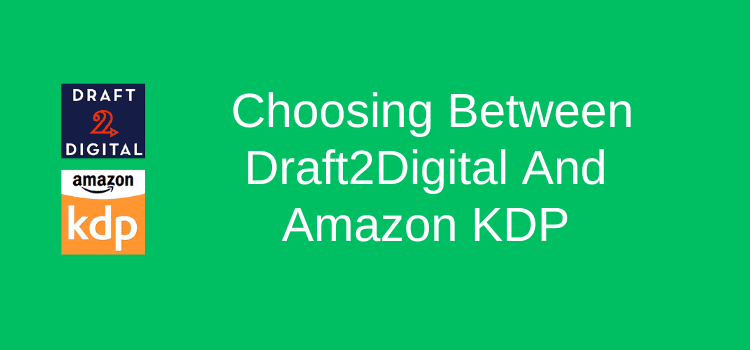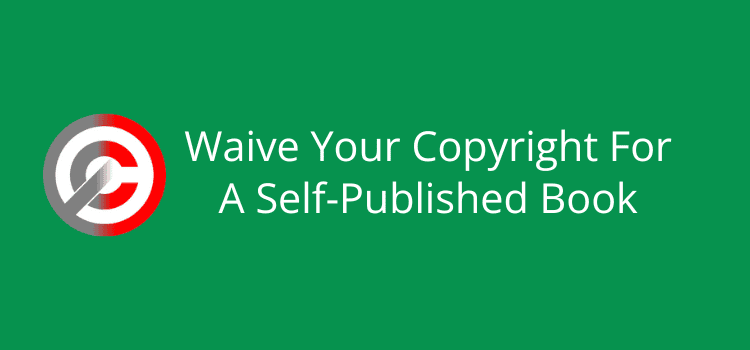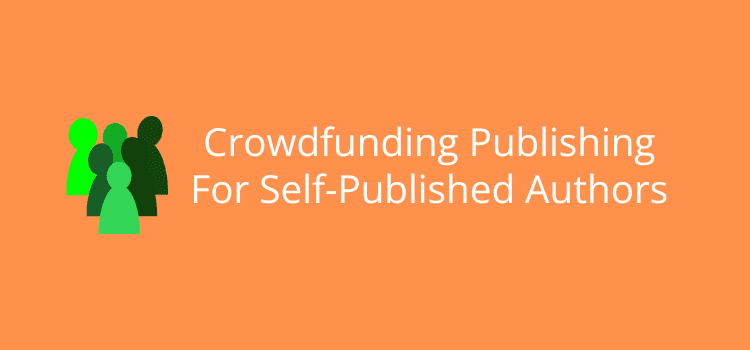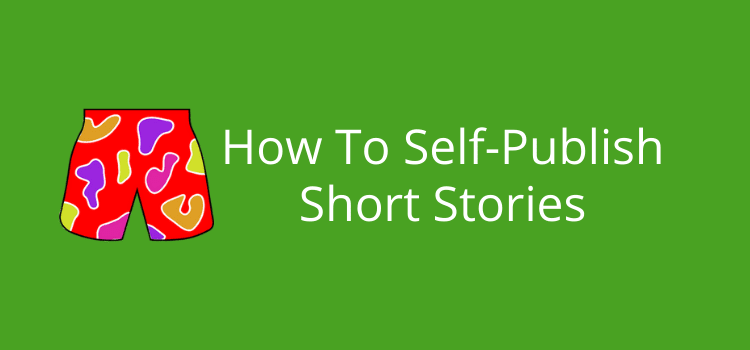
If you’re almost ready to self-publish your first ebook or book, choosing between Draft2Digital or Amazon KDP will likely be one of your first decisions.
Both publishing services have advantages, but you want to choose the one that’s right for you and your needs.
With Amazon KDP (Kindle Direct Publishing), you can publish and sell your book on all Amazon stores. However, Draft2Digital has a more extensive distribution network and easy-to-use publishing tools.
Before you decide which one is right for you, here are some essential factors you should consider.
What are the primary differences?
When you compare Draft2Digital and Amazon KDP, the first major difference is the distribution reach.
Amazon KDP lists your book on all Amazon stores, giving you access to millions of potential Amazon buyers on one of the world’s largest e-commerce platforms.
However, Draft2Digital is an aggregator that offers broader distribution. It lets you sell your ebook on numerous online retailers and libraries, including Apple Books, Barnes & Noble, Smashwords, Kobo, as well as Amazon.
Another key difference is that KDP offers an exclusivity option to enrol in the Amazon KDP Select program.
It requires you to sell an ebook version exclusively through Amazon in exchange for additional promotional tools, higher royalties in a few selected countries, and availability in Kindle Unlimited.
Draft2Digital, on the other hand, doesn’t have any exclusivity options. It gives you the freedom to distribute and sell your ebook wherever you like.
Another factor is ebook formatting. Draft2Digital simplifies the process of converting your manuscript into different ebook formats and automatically creates your front and back matter pages. Amazon KDP provides some tools, but it often requires a bit more work.
Royalty rates are an essential consideration. Amazon KDP pays a 70% royalty on ebooks priced at $2.99 or higher but only 35% on lower-priced ebooks. Draft2Digital passes on 90% of the net royalties to you from each retailer, no matter what your selling price is.
Regarding assistance, Draft2Digital has a much better help and support service. That’s a huge plus for first-time authors learning how to self-publish.
Both platforms are free to use, but naturally, they take a cut of your earnings. However, identifying the differences can help you decide which one is the best option for your publishing goals.
What are the payment options for royalties?
Draft2Digital and Amazon KDP have different payment structures and options that are worth thinking about when making your decision.
Amazon KDP pays royalties 60 days after the end of each month in which you sell books or earn Kindle Unlimited earnings.
Payments are made via direct deposit, wire transfer, or check, depending on your location and selected payment method.
Amazon KDP allows you to choose from multiple currencies, which can be convenient if you don’t live in the US or UK.
Draft2Digital pays your royalty earnings monthly, usually around the 15th of the month, for the previous month’s sales.
You can choose different payment methods, including PayPal, direct deposit, and even paper checks for US authors.
One of the advantages of Draft2Digital is lower payment thresholds. There is no minimum for PayPal and direct deposit, but there is a $100 threshold for checks.
Amazon KDP also has thresholds that can vary depending on the payment method and currency you choose.
The threshold is $100 for checks and wire transfers, while direct deposits usually have no minimum. However, it does not offer a PayPal payment option.
Another key difference is how each platform handles royalties from different markets.
With Amazon KDP, all royalties come directly from Amazon sales. But Draft2Digital aggregates royalties from various retailers into a single payment.
Both platforms also allow you to keep track of your earnings through detailed dashboards, but Draft2Digital’s system is a little better because of its clarity and ease of use.
One critical issue is that both platforms may withhold taxes if you’re a US or international author without the proper tax information on file.
Investigating and researching the payment options and tax obligations is vital because they are crucial for your earnings after you publish your book.
What are the pros and cons of each one?
When deciding between Draft2Digital and Amazon KDP, you need to weigh up the pros and cons of each platform to help you choose the best fit for your publishing goals.
I have successfully used both platforms for many years, so I can say that there is no right or wrong choice. Both platforms are reliable and work well for thousands of authors.
However, each one has some advantages and disadvantages that are worth considering.
Amazon KDP Pros
Amazon’s Market Reach: Amazon KDP offers access to the world’s largest online book retailer. This can potentially give you significant visibility and sales potential.
KDP Select: Enrolling in KDP Select gives you access to promotional tools like Kindle Countdown Deals and free ebook promotions. You can also reach Kindle Unlimited subscribers, potentially boosting your earnings.
Higher Royalties for Certain Price Ranges: Amazon KDP offers a 70% royalty rate on ebooks priced between $2.99 and $9.99. It is attractive if you plan to price your book in this range.
Amazon KDP Cons
Exclusivity Requirements: To access KDP Select benefits, you must sell exclusively through Amazon. This eliminates your ability to sell your ebook on other platforms and retailers, including your website.
Manual Formatting: While KDP offers some tools for formatting, they can be a bit complex. You need more effort or expertise to get your book formatting right.
Higher Payment Thresholds: Check and wire transfer payment thresholds are relatively high, which might delay your earnings if you don’t meet them.
Customer Support: Amazon is a huge company, so don’t expect a lot of assistance from KDP help or Customer Support. It’s often very slow and not necessarily overly helpful.
Draft2Digital Pros
Wider Distribution: Draft2Digital distributes your ebook to multiple online retailers (including Amazon). It lets you reach a broader international audience without any exclusivity restrictions.
Ease of Use: Draft2Digital’s user-friendly interface and automated formatting tools, including typography options, make it easier for first-time authors to publish without any major technical headaches.
Lower Payment Thresholds: With no minimum threshold for most payment methods (apart from checks), you’re more likely to receive royalties regularly, even if your sales are quite low. The PayPal option is also a plus for international authors.
Excellent Customer Support: Draft2Digital offers responsive and helpful customer support, which can be a significant advantage for new authors.
Draft2Digital Cons
Lower Royalty Rates: While Draft2Digital passes on 90% of net royalties from its retailers, this often results in a slightly lower payout than Amazon’s 70% royalty rate for certain price ranges. In general, you can expect to earn around 60% of your list price.
Less Direct Market Influence: Because Draft2Digital distributes to multiple retailers, you might not see the concentrated sales impact that Amazon’s massive marketplace can provide.
No Equivalent to KDP Select: Draft2Digital doesn’t offer a program like KDP Select, so you won’t have access to Amazon’s exclusive promotional tools or readers using Kindle Unlimited.
In summary, Amazon KDP is ideal if you’re looking for maximum exposure on a single platform with the possibility of exclusive benefits. But Draft2Digital excels in ease of use and broad distribution without tying you down to one retailer.
Your choice will depend entirely on what matters most to you. Is it market reach, ease of publishing, or payment flexibility?
When it comes to ease of use for first-time authors, I have to say that from my experience, Draft2Digital is the clear winner.
Its automated formatting tools convert your manuscript into various ebook formats, which can save you time and reduce the possibility of formatting issues.
You only need to provide your basic manuscript with chapter titles.
It also looks after your front and back matter, such as title and copyright pages, table of contents, and also lists your other titles if you have any.
The setup process is easy, with clear instructions, making it simple to use, even if you’re new to self-publishing.
Additionally, Draft2Digital provides a centralized dashboard where you can manage your book’s distribution and track sales all in one place.
Amazon KDP, while efficient, can be a bit more complex for first-time authors.
The platform requires you to manually format your book. It can be challenging if you’re not familiar with formatting guidelines and the creation of the necessary additional pages.
The KDP interface offers numerous options and settings that can be a bit overwhelming if you’re just starting out.
However, once you get past the initial learning curve, KDP’s promotional tools can be advantageous for managing and optimizing your ebook’s performance.
In terms of customer support, Draft2Digital offers a responsive and helpful service, which can be a huge positive if you are a new author and encounter issues or have questions.
Amazon KDP also offers support, but it can sometimes be slow, less personal, and not always very helpful.
On balance, if you’re looking for a more straightforward and less technical publishing experience, Draft2Digital might be the better choice.
It simplifies many aspects of the self-publishing process, allowing you to focus more on writing and less on technical details.
On the other hand, if you’re willing to invest some time in learning the platform and taking advantage of Amazon’s resources, KDP can certainly be worthwhile.
Can you use both?
Yes, you can. But you need to be aware of what you can and can’t do.
It’s important to understand that there is no restriction on print books. You can publish your book using any platform and make it available on any retailer, including Amazon.
Restrictions only affect ebooks.
Many self-publishing authors publish with standard KDP to take advantage of the higher 70% royalty rate. Then, they publish with Draft2Digital to make their ebook available on many other retailers and libraries.
However, this is only possible if you DO NOT enroll in Amazon KDP Select. If you do enroll, you can only sell your ebook on Amazon.
Another option that I have used successfully is to publish a new ebook title with KDP and enroll the book for 90 days in KDP Select. It is a good option to launch a new title and hope to get reviews from Kindle Unlimited readers.
Then, at the end of the enrollment period, I remove the ebook from KDP Select, and I am free to publish with Draft2Digital.
Summary
Choosing between Draft2Digital and Amazon KDP for your first self-published ebook is not a straightforward decision.
Draft2Digital offers broad distribution across multiple retailers, user-friendly formatting tools, and flexible payment options. This makes it a good choice for those who prefer a straightforward, non-exclusive approach.
On the other hand, Amazon KDP provides access to Amazon’s huge custom base, with potential benefits from its exclusive programs and higher royalty rates.
In the end, the right platform for you depends on your specific needs and goals as an author.
If you value ease of use and wide distribution without exclusivity constraints, Draft2Digital is a fantastic option.
However, if you’re happy with selling your book on Amazon only and are comfortable navigating a slightly more complex setup, Amazon KDP and KDP Select might be the better fit.
It’s up to you to weigh up the pros and cons of each one. Then, you can make an informed decision that suits your publishing goals.
Related Reading: When To Self-Publish Directly Or Use An Aggregator
Share This Article


